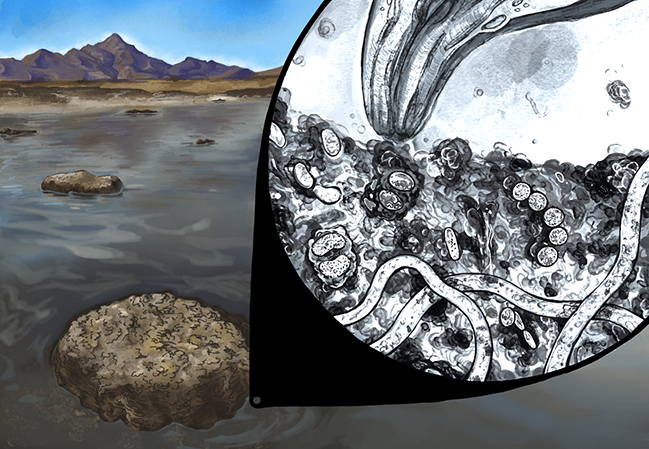Nature is interdisciplinary. To best understand (and protect!) the natural world, we need to bring together diverse methods from evolutionary theory, ecology, molecular biology, mathematical modeling, behavioral biology, microscopy, mechanical engineering, genetics, genomics, and bioinformatics.
Current Projects
- GENERAL PLASTICITY KINETICS: Developing a universal framework of developmental plasticity to identify the real-time evolutionary process of genetic accommodation.
- THE LIMITS OF LIFE IN THE GREAT SALT LAKE: Wild-caught nematodes may reveal molecular mechanisms of adapting to extreme environments.
- P.O.D.E.S.: Plasticity of digestive enzymes in wild-caught small mammals. (If anyone can think of a “snappier” title for this project, I am all ears…)
- WORM BARN OLYMPICS: Developing a platform to systematically test fitness of worm strains under various conditions.
- FROG EMBRYO EAR DEVELOPMENT: Analyzing µ-CT scans and confocal images of developing embryos ears.
- VIBRATION VOLUME: The role of vibration amplitude information in the escape-hatching response of red-eyed treefrog embryos.
Past Projects
- The mechanism of vibration detection in red-eyed treefrog embryos.
- The optimal responses to ambiguity in information cues.
- The influence of land management practices on the abundance and diversity of fall-blooming Asteraceae and their pollinators.
- The effects of anthropogenic road noise on eavesdropping systems of the eastern chipmunk on the alarm calls of tufted titmice.
- The development of a high school capstone course in Ecological Environmental Science, focusing on curricula materials involving biology and climate-science.
- The analysis of local water samples from the Hoosic River Watershed to test for quality and ion balance.
- The design of an RNAi construct to silence the expression of genes that trigger allergies to US bread wheat Butte 86.
These projects may seem broad, but they are intimately connected. By studying behavioral plasticity in red-eyed treefrogs in the tropics, I acquired the skills in field biology to feel confident working with wild populations of animals across Utah, California, and other spots in the Intermountain West. After dipping my toes into gene editing in wheat at the USDA, I acquired the tools in sterile technique and functional genomics to (i) launch a project developing a novel barcoding platform in nematodes and (ii) start growing colonies of North American Lake Cress in borrowed plant growth chamber space at the University of Utah to study heterophylly in leaf phenotypes. As one last example, my experience as an REU student recording road noise and conducting audio playback experiments to chipmunks and songbirds in upstate NY probably helped to convince Karen (my future PI) that I could use Raven and Matlab to run vibration playback experiments to frog embryos in Panama.
I strongly believe that the value of “basic” science extends beyond its immediate products. While applied research is important to bring innovations to market, “pure” research in biology expands the knowledge base needed for breakthrough scientific advances. It is fundamentally worth our while to study the type of science that answers all the burning questions that the 5 year old deep in all of us pummels at us day long. I only hope we can keep that curiosity alive, the one that keeps us awake at night following the trail of leafcutter ants to their fungus farms or watching snakes not eat in a tropical rainforest.

